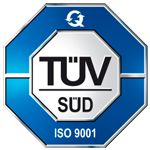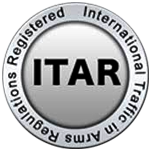7 Essential Tips for Maximizing Efficiency with Induction Metal Heaters
In today's fast-paced manufacturing landscape, maximizing efficiency is paramount, especially when it comes to heating processes. Induction metal heaters have emerged as a game-changer, offering precise and rapid heating solutions that not only enhance productivity but also improve energy consumption. According to a recent report by Allied Market Research, the global induction heating equipment market is projected to reach $3.2 billion by 2027, reflecting a CAGR of 5.7%.
This surge underscores the growing recognition of induction metal heaters in various industries, including automotive, aerospace, and electronics, due to their ability to deliver consistent results while minimizing waste. However, to fully leverage the benefits of induction heating technology, it is crucial to implement best practices. In this blog, we will explore seven essential tips for maximizing efficiency with induction metal heaters, empowering manufacturers to optimize their processes and achieve significant gains in performance and cost-effectiveness.
Understanding Induction Heating: Efficiency Ratings and Performance Metrics
Induction heating is transforming the metal processing industry due to its inherent efficiency and precision. According to a recent report by the American Institute of Physics, induction heating systems can achieve an energy efficiency rating of up to 90%, significantly higher than traditional heating methods, which typically range between 30% to 70%. This not only reduces energy costs but also minimizes environmental impact, making it an attractive option for manufacturers looking to enhance their operational sustainability.
Performance metrics are equally vital when evaluating induction heating systems. A case study published by the Journal of Manufacturing Science and Engineering illustrated that induction heaters could reduce cycle times by up to 50% compared to conventional heating techniques. This optimization in performance allows operators to achieve faster throughput while maintaining high-quality standards. Furthermore, the precise control over heating zones afforded by inductive technology results in less material wastage and improved overall product quality, further reinforcing the case for its adoption in various industries, from automotive to aerospace.
7 Essential Tips for Maximizing Efficiency with Induction Metal Heaters
| Tip | Description | Efficiency Rating (%) | Performance Metrics |
|---|---|---|---|
| Optimize Coil Design | Use the right coil configuration to enhance heating efficiency. | 85 | Uniform heat distribution |
| Maintain Equipment | Regular maintenance to ensure optimal performance. | 90 | Minimized downtime |
| Use Appropriate Materials | Select metals that are highly conductive for better heating. | 95 | Faster heat-up times |
| Control Heating Cycles | Implement precise control systems to optimize heating cycles. | 88 | Improved energy usage |
| Monitor Power Usage | Track energy consumption for better electrical efficiency. | 87 | Cost savings |
| Adjust Frequency Settings | Optimize frequency settings for different materials. | 92 | Tailored heating |
| Use Insulation | Insulate workpieces to retain heat and improve efficiency. | 84 | Reduced energy loss |
Identifying the Right Induction Metal Heater for Your Application Needs
Choosing the right induction metal heater for your specific application is crucial for enhancing productivity and ensuring optimal performance. According to a recent report by the International Journal of Advanced Manufacturing Technology, the efficiency of induction heating can reach as high as 90% when matched correctly to the material and process. This highlights the importance of understanding your heating requirements before making a purchase. Consider factors such as the size and shape of the workpiece, heating duration, and material composition, as these can significantly influence the heater's effectiveness.
Further data from MarketsandMarkets indicates that the global induction heating equipment market is projected to grow at a CAGR of 8.7% from 2022 to 2027. This growth underscores the rising demand for advanced induction heating technologies tailored for various industries, including automotive and aerospace. Selecting a heater designed for your specific application needs, such as forging, brazing, or annealing, can lead to enhanced energy savings and reduced cycle times, ultimately boosting your overall operational efficiency. Investing in the right induction metal heater is not merely a purchase; it’s a strategic decision that can propel your production capabilities.
Five Key Factors That Influence Induction Heating Efficiency
When it comes to induction heating, efficiency can often be improved by understanding the key factors that influence it. One primary factor is the frequency of the induction heater. Higher frequencies provide quicker heating but may lead to increased energy losses in certain materials. Conversely, lower frequencies can be more efficient for thicker parts, but they may take longer to achieve the desired temperature. Thus, selecting the right frequency for your specific application is essential for maximizing heating efficiency.
Another crucial aspect is the coil design. The shape, size, and material of the induction coil directly affect the electromagnetic field produced. A well-designed coil ensures uniform heating and minimizes energy loss.
It's also important to consider the material being heated; different metals have varying electrical resistivities and magnetic properties, which can result in differing heating efficiencies. Proper material selection enhances the performance of the induction heating system and ensures optimal results in various applications. By paying attention to these factors, users can significantly enhance the effectiveness of induction heating processes.
Maximizing Cycle Times: Effective Scheduling and Process Optimization Techniques
Effective scheduling and process optimization are crucial for maximizing efficiency with induction metal heaters. By understanding and implementing effective scheduling techniques, manufacturers can significantly reduce cycle times and enhance productivity. This involves analyzing current processes to identify bottlenecks, allowing teams to allocate resources more effectively. Utilizing data-driven insights can help in adjusting production schedules in real-time, catering to demands while ensuring equipment is used to its full potential.
Incorporating advanced technologies, such as AI and machine learning, also offers an opportunity for refining operational strategies. For instance, predictive analytics can facilitate more precise scheduling, minimizing idle time and optimizing heat application during the metal heating process. By embracing these innovations, the induction heating industry can align with national carbon reduction goals, improving overall operational efficiency while contributing to a sustainable future. This holistic approach fosters both high-quality development and environmental responsibility.
Maintenance Best Practices to Ensure Long-term Efficiency in Induction Heating Systems
Induction heating systems are renowned for their efficiency and speed in metal processing, but maintaining that efficiency over time requires regular upkeep. A study from the National Institute of Standards and Technology (NIST) indicates that proper maintenance can enhance the lifespan of induction heaters by up to 25%. This longevity directly correlates with lower operational costs, as well-maintained systems consume up to 15% less energy, a significant advantage in today's competitive industrial environment.
To ensure long-term efficiency, it is crucial to regularly inspect components such as coils, cooling systems, and capacitors. According to a report by the Institute of Electrical and Electronics Engineers (IEEE), neglecting routine checks can lead to a 30% drop in system performance. Additionally, adopting a preventive maintenance schedule, which includes cleaning and calibration, can mitigate unexpected breakdowns, further boosting productivity. By prioritizing these best practices, manufacturers can unlock the full potential of their induction heating systems, ensuring maximized operational efficiency and reduced costs.
NORTH EASTON MACHINE • 218 Elm Street • North Easton, MA 02356 • 508-238-6219

